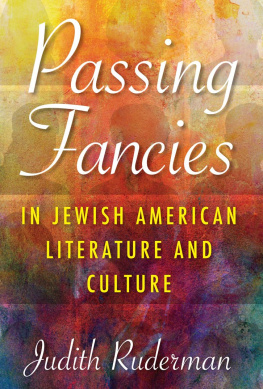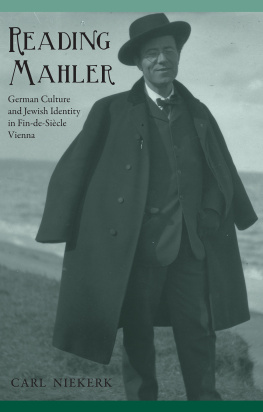ENTANGLED ENTERTAINERS
AUSTRIAN AND HABSBURG STUDIES
General Editor: Howard Louthan, Center for Austrian Studies,
University of Minnesota
Before 1918, Austria and the Habsburg lands constituted an expansive multinational and multiethnic empire, the second largest state in Europe and a key site for cultural and intellectual developments across the continent. At the turn of the twentieth century, the region gave birth to modern psychology, philosophy, economics, and music, and since then has played an important mediating role between Western and Eastern Europe, today participating as a critical member of the European Union. The volumes in this series address specific themes and questions around the history, culture, politics, social, and economic experience of Austria, the Habsburg Empire, and its successor states in Central and Eastern Europe.
Recent volumes:
Volume 24
Entangled Entertainers: Jews and Popular
Culture in Fin-de-Sicle Vienna
Klaus Hdl
Volume 23
Comical Modernity: Popular Humour
and the Transformation of Urban Space
in Late Nineteenth-Century Vienna
Heidi Hakkarainen
Volume 22
Embers of Empire: Continuity and
Rupture in the Habsburg Successor States
after 1918
Edited by Paul Miller and Claire Morelon
Volume 21
The Art of Resistance: Cultural Protest
against the Austrian Far Right in the
Early Twenty-First Century
Allyson Fiddler
Volume 20
The Monumental Nation: Magyar
Nationalism and Symbolic Politics in
Fin-de-sicle Hungary
Blint Varga
Volume 19
Tropics of Vienna: Colonial Utopias of the
Habsburg Empire
Ulrich E. Bach
Volume 18
Sacrifice and Rebirth: The Legacy of the Last
Habsburg War
Edited by Mark Cornwall and John Paul
Newman
Volume 17
Understanding Multiculturalism: The Habsburg
Central European Experience
Edited by Johannes Feichtinger and Gary B.
Cohen
Volume 16
The Viennese Caf and Fin-de-Sicle Culture
Edited by Charlotte Ashby, Tag Gronberg,
and Simon Shaw-Miller
Volume 15
Territorial Revisionism and the Allies of
Germany in the Second World War: Goals,
Expectations, Practices
Edited by Marina Cattaruzza, Stefan Dyroff,
and Dieter Langewiesche
For a full volume listing, please see the series page on our website:http://berghahnbooks.com/series/austrian-habsburg-studies.
First published in 2019 by
Berghahn Books
www.berghahnbooks.com
2019 Klaus Hdl
Published with the support of Austrian Science Fund (FWF): [PUB 607-G28]
Translated from the German
Except for the quotation of short passages for the purposes of criticism and review, no part of this book may be reproduced in any form or by any means, electronic or mechanical, including photocopying, recording, or any information storage and retrieval system now known or to be invented, without written permission of the publisher.
Library of Congress Cataloging-in-Publication Data
A C.I.P. cataloging record is available from the Library of Congress
Library of Congress Cataloging in Publication Control Number: 2019026289
British Library Cataloguing in Publication Data
A catalogue record for this book is available from the British Library
ISBN 978-1-78920-030-0 hardback
ISBN 978-1-78920-031-7 open access ebook
An electronic version of this book is freely available thanks to the support of libraries working with Knowledge Unlatched. KU is a collaborative initiative designed to make high-quality books Open Access for the public good. More information about the inititative and links to the Open Access version can be found at knowledgeunlatched.org.
This work is published subject to a Creative Commons Attribution 4.0 Unported License. The terms of the license can be found at http://creativecommons.org/licenses/by/4.0/. For uses beyond those covered in the license contact Berghahn Books.
INTRODUCTION
On an icy December day in the year 1900, a mother was found wandering with four children along the bank of the Danube Canal in Vienna. She made a move as if to throw herself and her little ones from a bridge into the cold water. A lineman heard the childrens cries and was able to keep the woman from following through with her plan. He brought the family to the nearest police station. There, it was learned that the suicidal woman was an impoverished peddler who could no longer feed her children and was facing eviction. Her husband, a wandering performer, had taken a job as a ventriloquist and was working far away from the city. In the last letter she had received from him, her husband had advised her to sell the bedsprings and the kitchenware and use the money to buy food for the children.
By and large, the social situation of the Katz family (the family named in the previous anecdote) scarcely differed from that of thousands of other Jewish families in Vienna at the end of the nineteenth century and the turn of the twentieth century. A significant number of them lived in dire circumstances and had few resources to cope with the difficulties they encountered over the course of their everyday lives. Jews, and non-Jews as well, sometimes lived in dark, damp quarters with several people crammed into one room, often sharing a single bed. Sometimes families also temporarily housed strangers within their already confined domestic spaces, Bettgeher (bed lodgers) who rented a bed or a place to sleep just for the night. Moral delinquency, illness, and social neglect found an ideal breeding ground in such conditions.
The oppressive poverty that characterized the everyday life of the Katz family was familiar not only to some of the Jewish, but also to non-Jewish members of the Viennese population. Such experiences, shared by both Jews and non-Jews, were also evident in Anna Katzs attempt to plunge into the Danube Canal as a result of her seemingly hopeless misery. Contemporary newspapers were full of accounts of people whose living conditions were so desperate that they saw no way out other than to commit suicide. We see the full extent of this tragic situation, for example, in the 1904 case of four female corpses that a pedestrian discovered in the Danube Canal. Independent of one another, the women had jumped into the ice-cold water, and all washed up on the riverbank at roughly the same time and place.

















